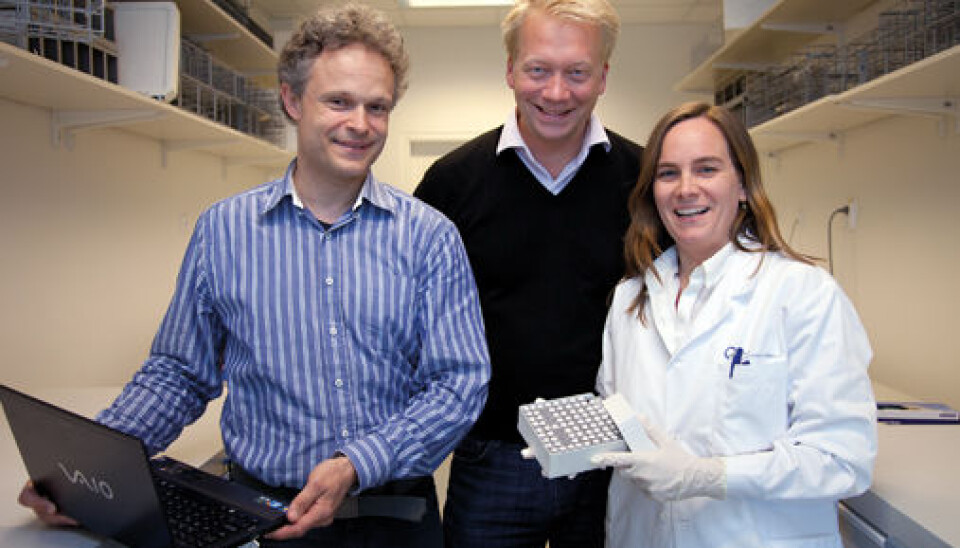An article from University of Oslo

Discovers aggressive breast cancers
It is now possible to identify aggressive breast cancers by interpreting the mathematical patterns in the cancer genome.
Denne artikkelen er over ti år gammel og kan inneholde utdatert informasjon.
Researchers at the University of Oslo (UiO) have developed a completely new method for differentiating between breast cancer patients with high and low risks of dying from the illness.
'Current methods cannot predict who will do well and who will not. We have wanted to identify the very seriously ill patients so that they can receive aggressive treatment', says Hege Russnes at the Department of Pathology and the Department of Medical Genetics at the Oslo University Hospital and UiO.
To be on the safe side, many breast cancer patients are treated unnecessarily with chemotherapy.
'Today, many patients receive chemotherapy even though they do not need this treatment. Without the treatment, they would not need to suffer serious side effects. The side effects are sometimes chronic or life-threatening. With our new method, we can distinguish between patients with a good and a poor prognosis. This makes it easier to select the best treatment for the patients', says oncologist Hans Kristian Vollan in the Department of Oncology and the Department of Medical Genetics at the Oslo University Hospital and UiO.
Finds the changed patterns in the genome

There is much talk about finding the special cancer gene. In reality, it is not that simple. The new method looks at the changes in the genetic material in the cancer cells.
To achieve this, the two medical researchers, along with Head of Research and UiO Professor Anne-Lise Børresen Dale, have begun a close collaboration with Ole Christian Lingjærde in the Department of Informatics at UiO. He is Professor of medical bioinformatics, a new discipline that uses statistics, mathematics and informatics to solve complex problems in cancer biology.
The four researchers have found the statistical connection between changes in cancer genomes and the course of disease for 600 Norwegian breast cancer patients over ten years.
For each patient, they have measured up to 240,000 characteristics of the genome in the cancer cells.
'We were drowning in information and had to use mathematical and statistical methods to identify the complex changes in the genome. We looked at local areas of the genome where the DNA pieces were shuffled. In some areas, genes are missing. In other areas, there are too many genes. The statistical analyses show that high complexity was clearly associated with increased risk of dying from the disease', Vollan notes.
In collaboration with the University of Cambridge, the UiO researchers will now study whether they get the same answers from 2,000 British and Canadian breast cancer samples.
'If the large study in Cambridge confirms our findings, we and other researchers can pick up the thread and conduct more targeted clinical studies to test whether our method can benefit patients', says Ole Christian Lingjærde.
This will make it possible to get fast diagnostic answers about the type of breast cancer the patient has.
Today, pathologists use microscopes to diagnose breast cancer and to tell how hard the patient is hit. However, it is impossible to see the complex genome changes in the microscope.
'Detailed gene analyses and statistical methods will help us move forward. This will be a very important part of the new pathology', Russness notes.
Gene chaos in cancer cells
The human genome consists of 24 chromosomes. Under normal conditions, each of the 20,000 genes has a fixed place on each of the 24 chromosomes. Each gene consists of a large number of base pairs. A genome has 3.3 billion base pairs.
With the exception of the sex chromosomes, healthy cells always have two copies of the entire gene material. In other words, the number of copies is always the same in two healthy cells.
'In cancer cells, changes take place in the genome, including changes in the number of copies. The changes can be very local or involve large areas in a chromosome. We have focused on the situation where there are many local changes within a limited area of the genome', Lingjærde says. His algorithm recognises the area of the genome that has a high number of copies.
Modern treatment
The four Norwegian researchers head the project, together with American, English and Swedish researchers.
They are now further developing the model to identify the exact areas of the genomes and the genes that are most frequently affected by the complex changes in the genome.
The new knowledge can also be important in finding a targeted, molecular treatment for breast cancer.

































